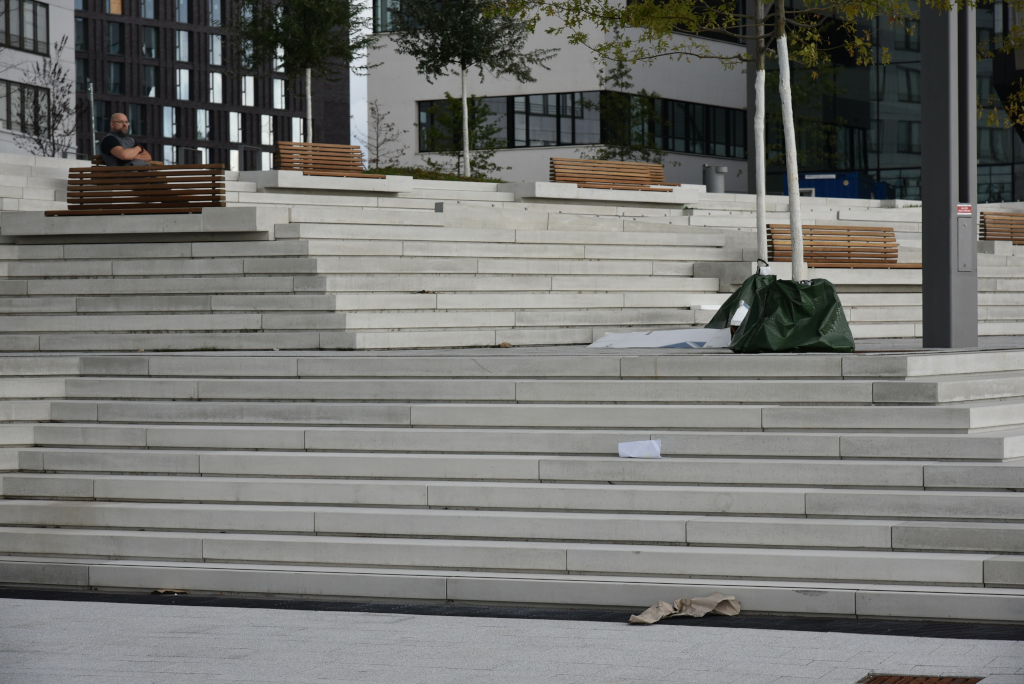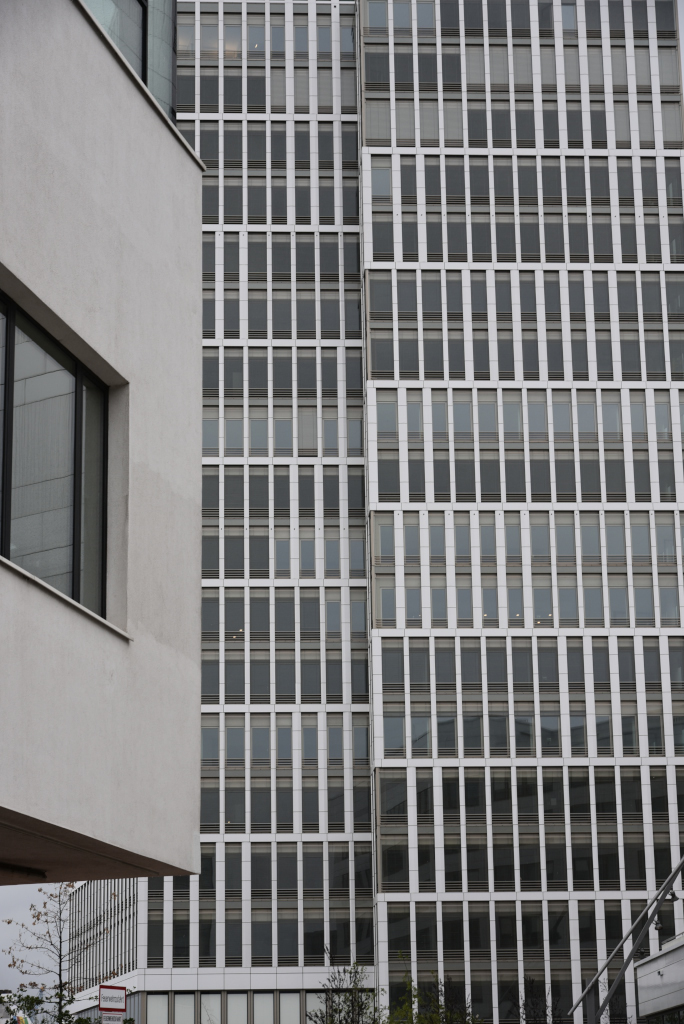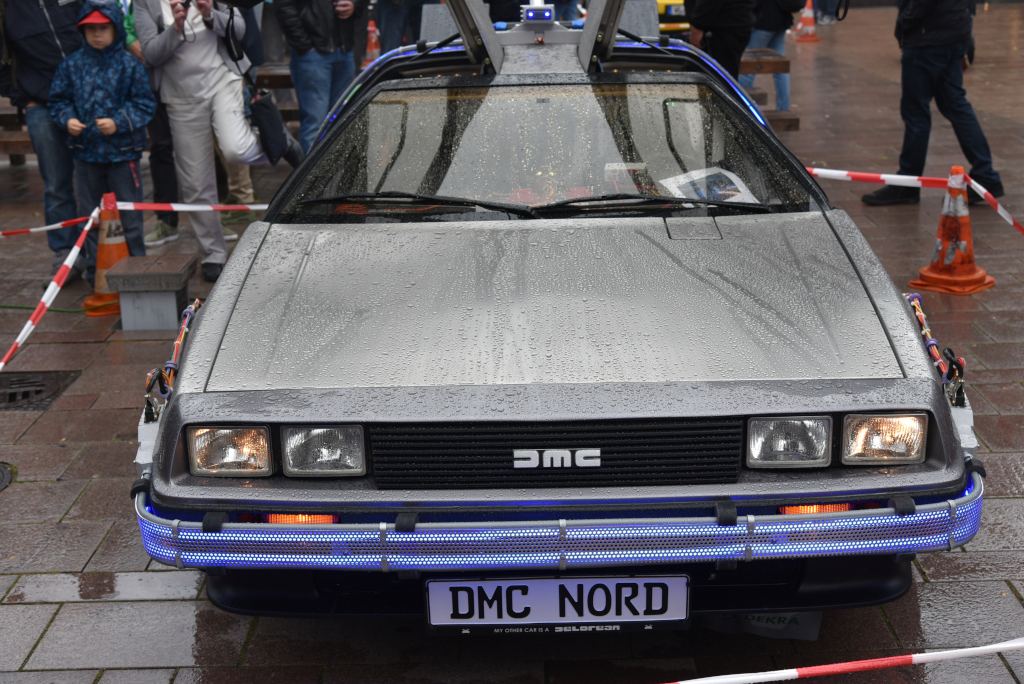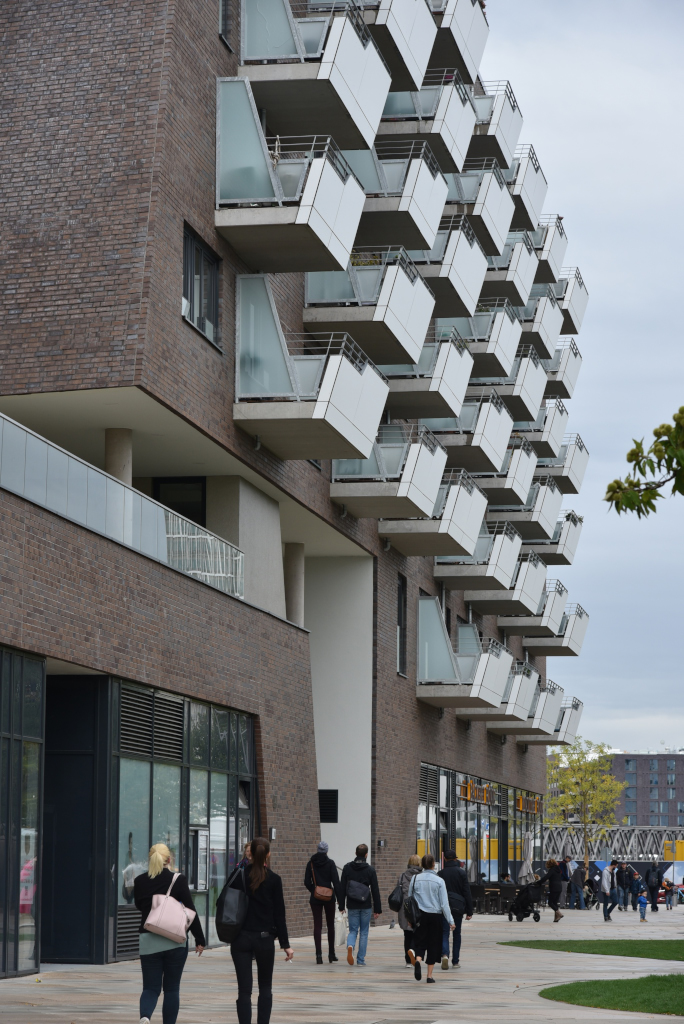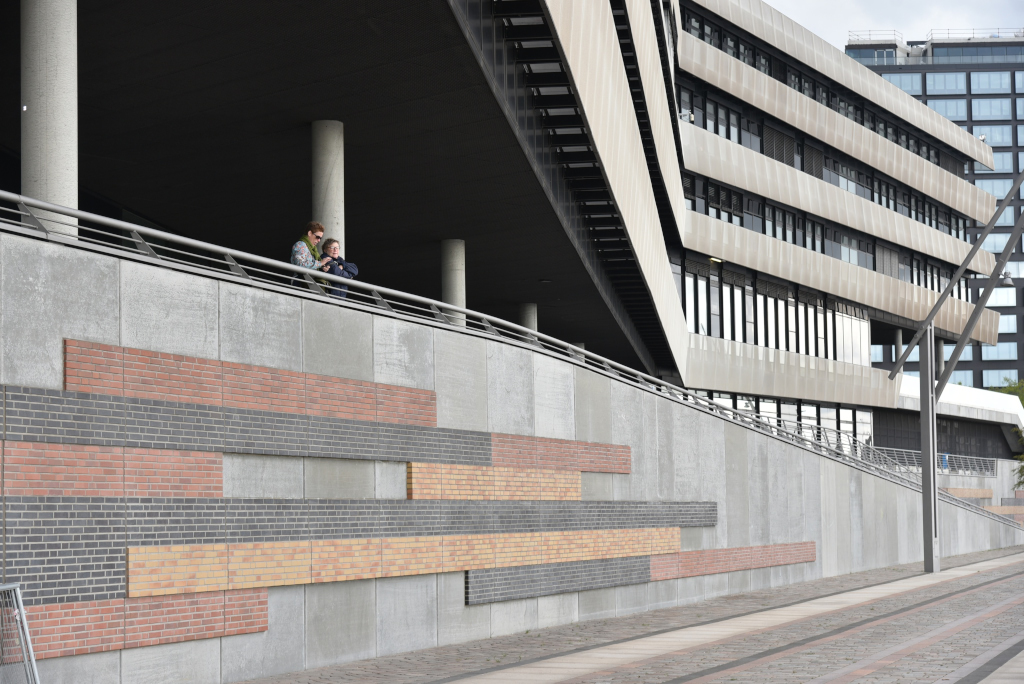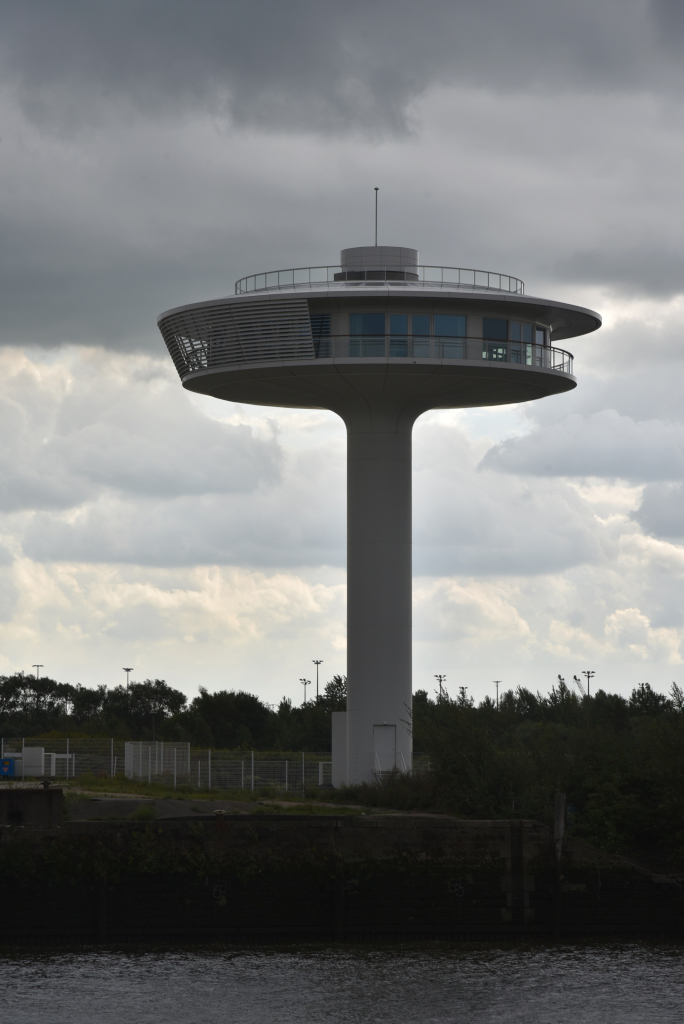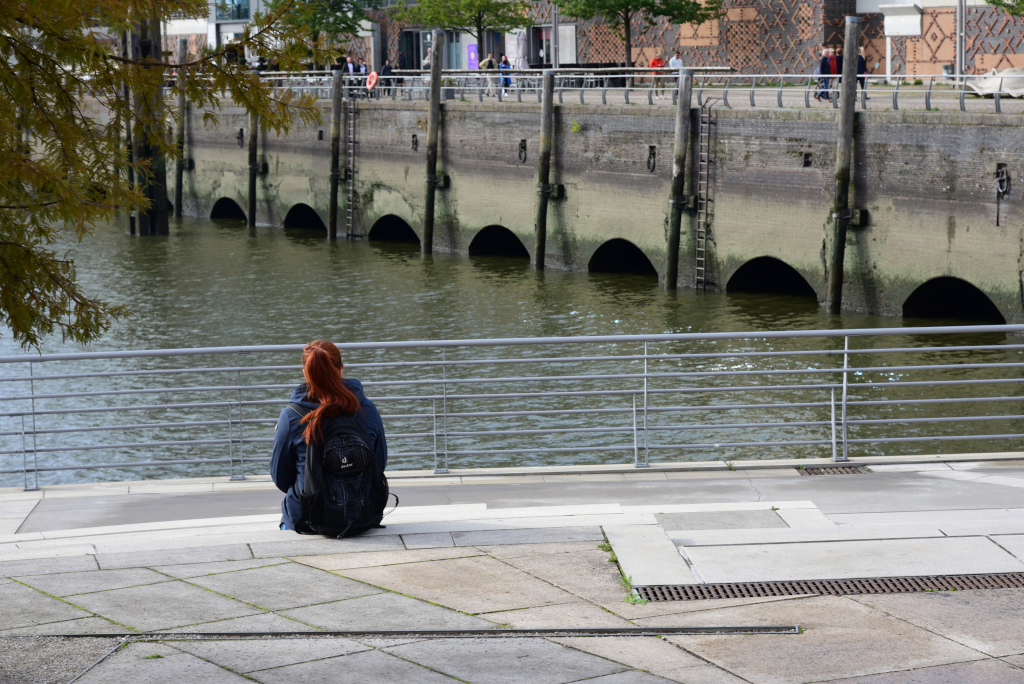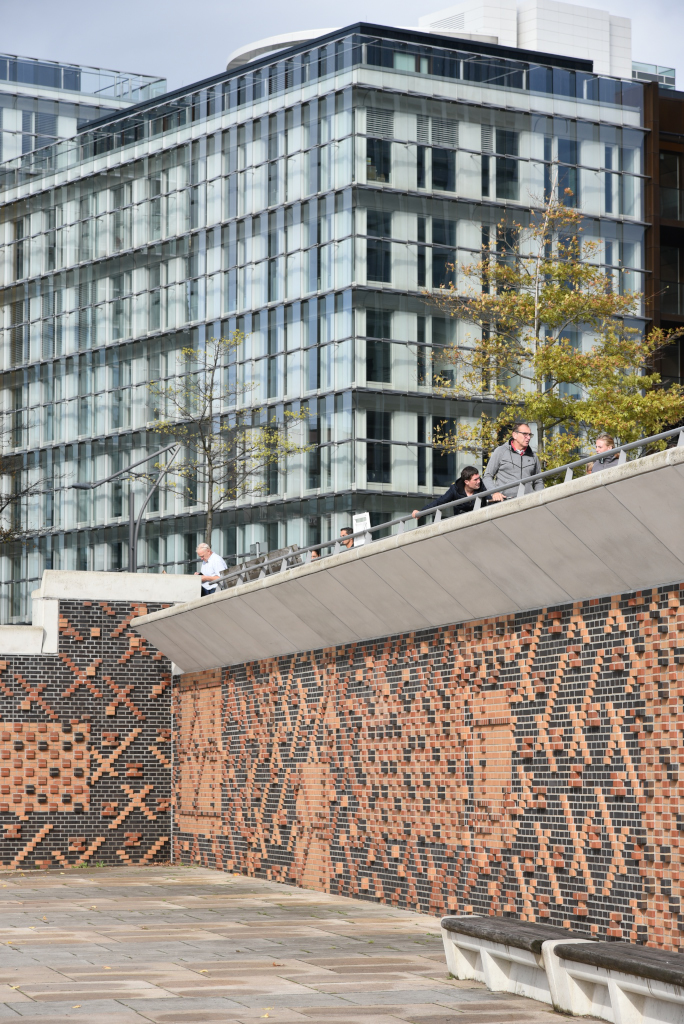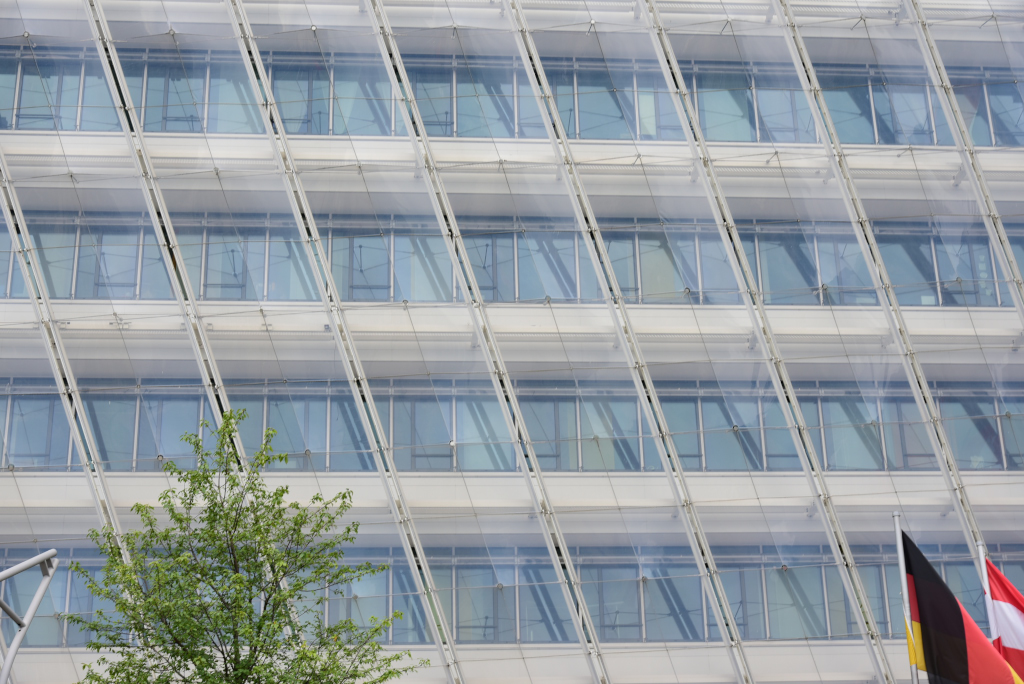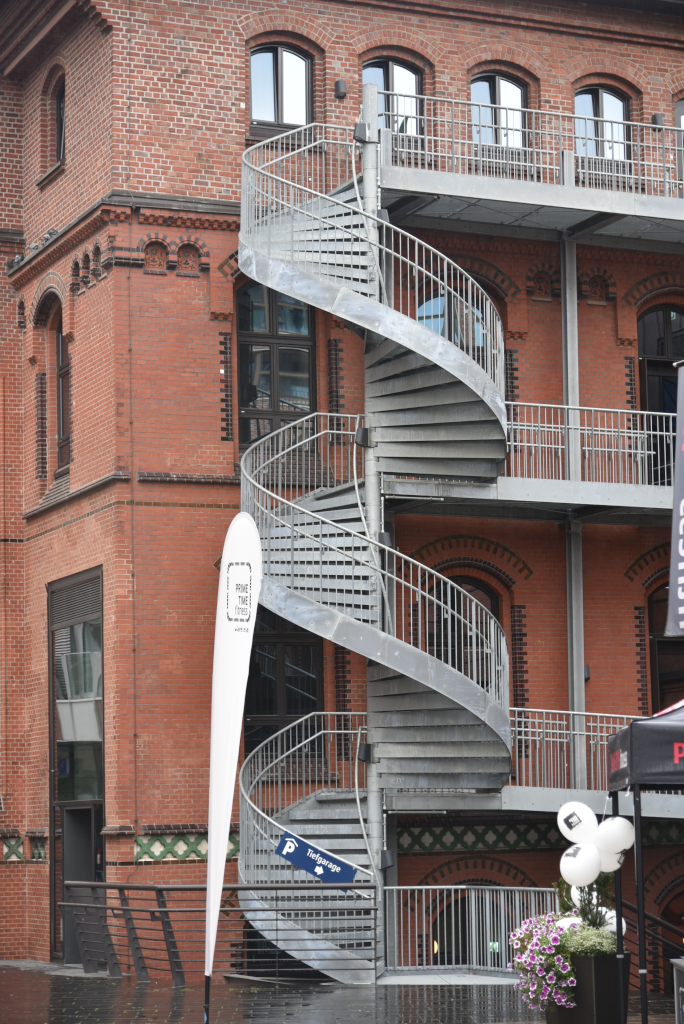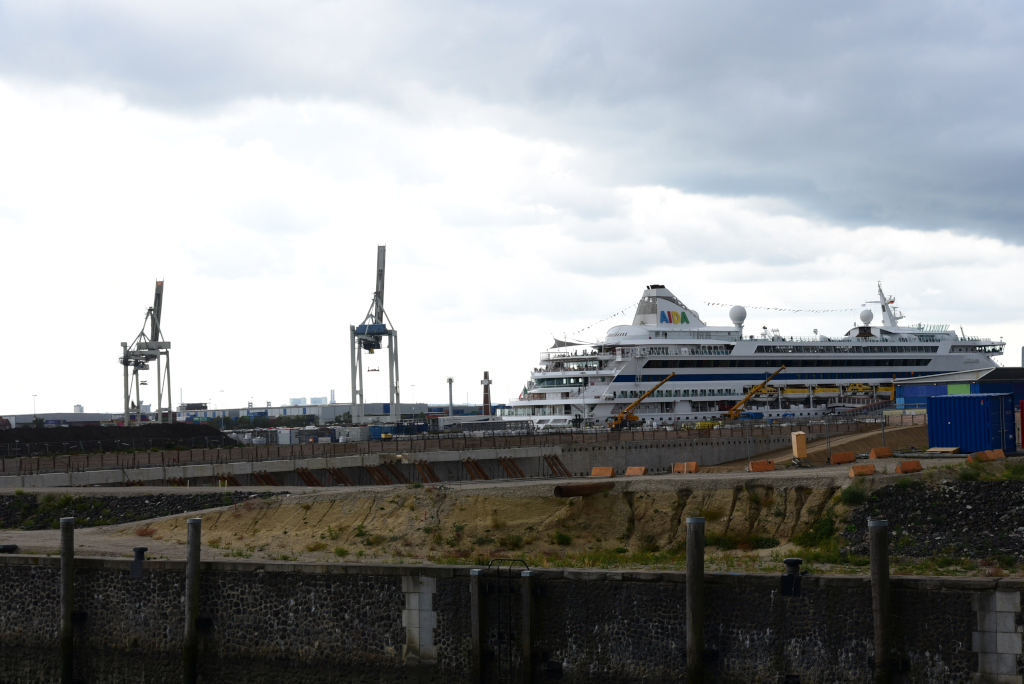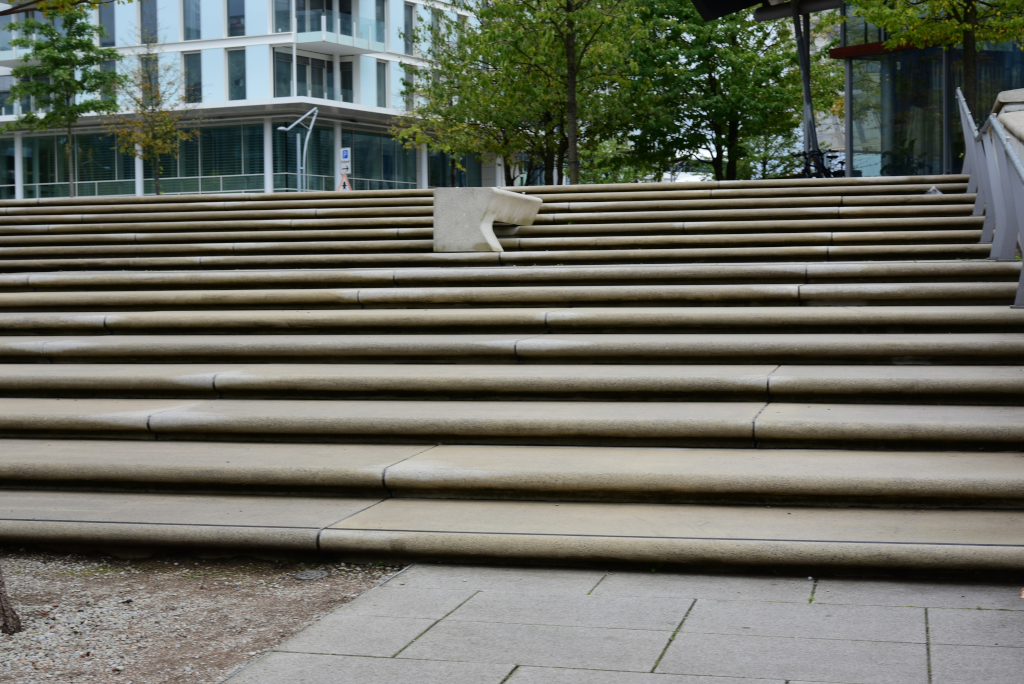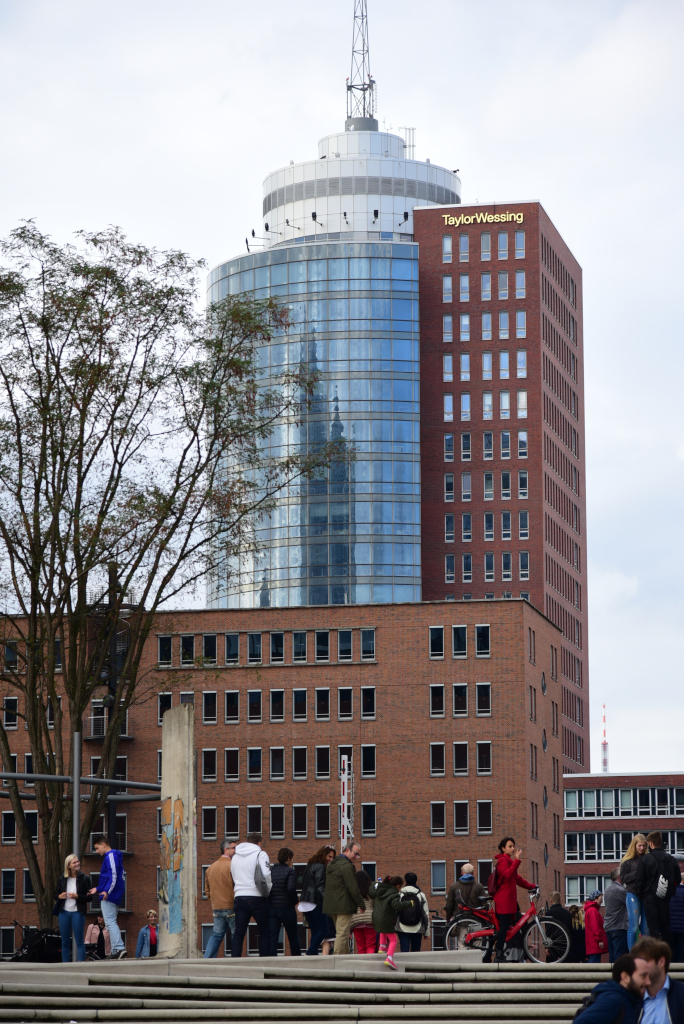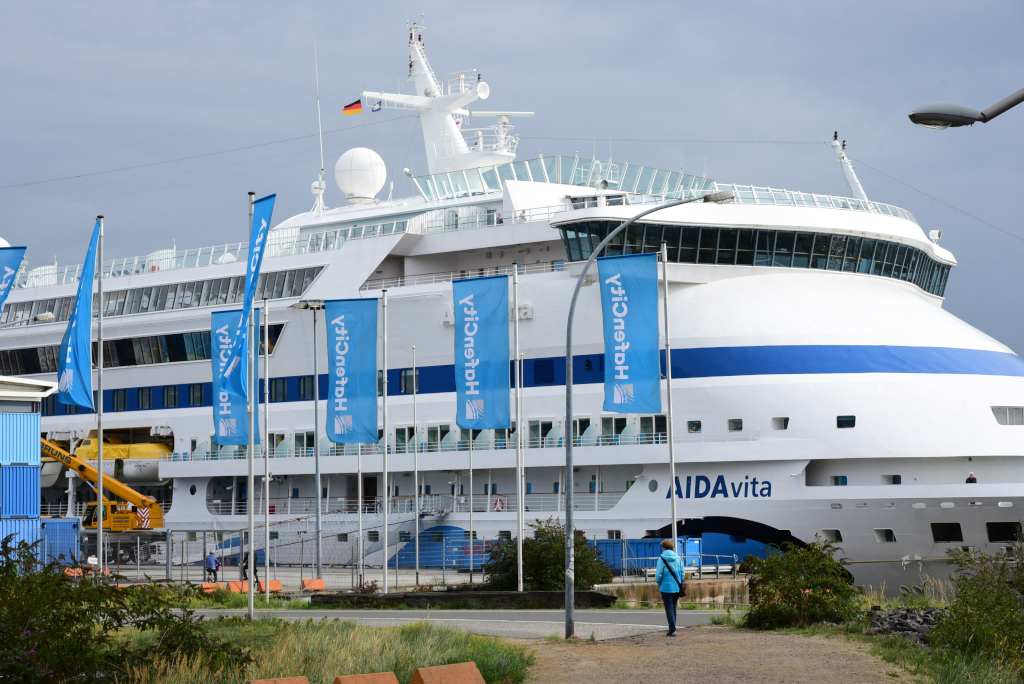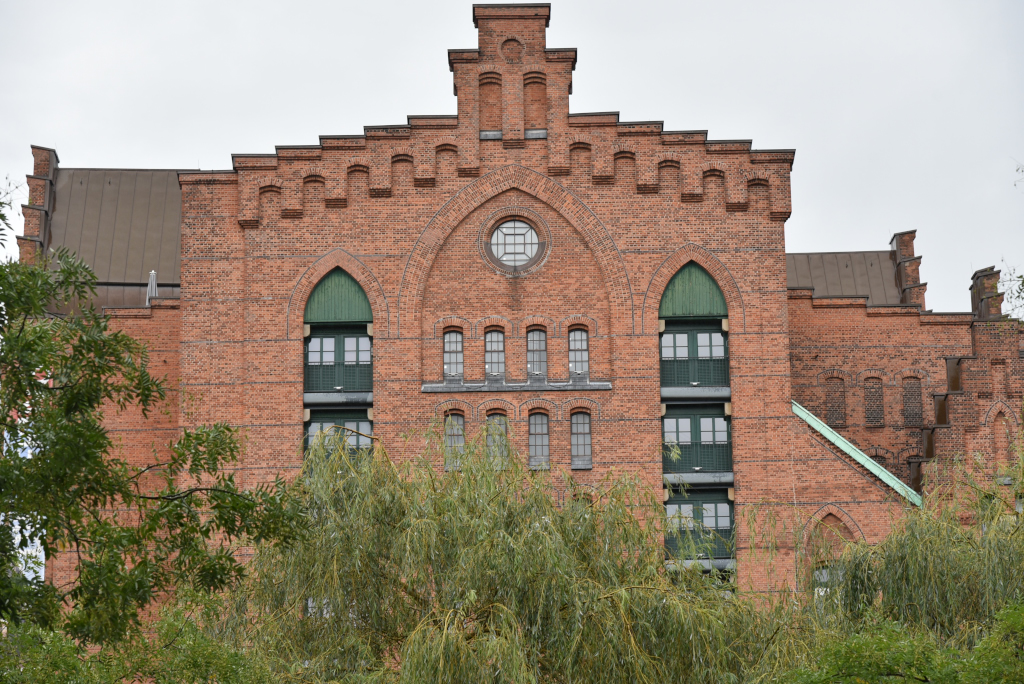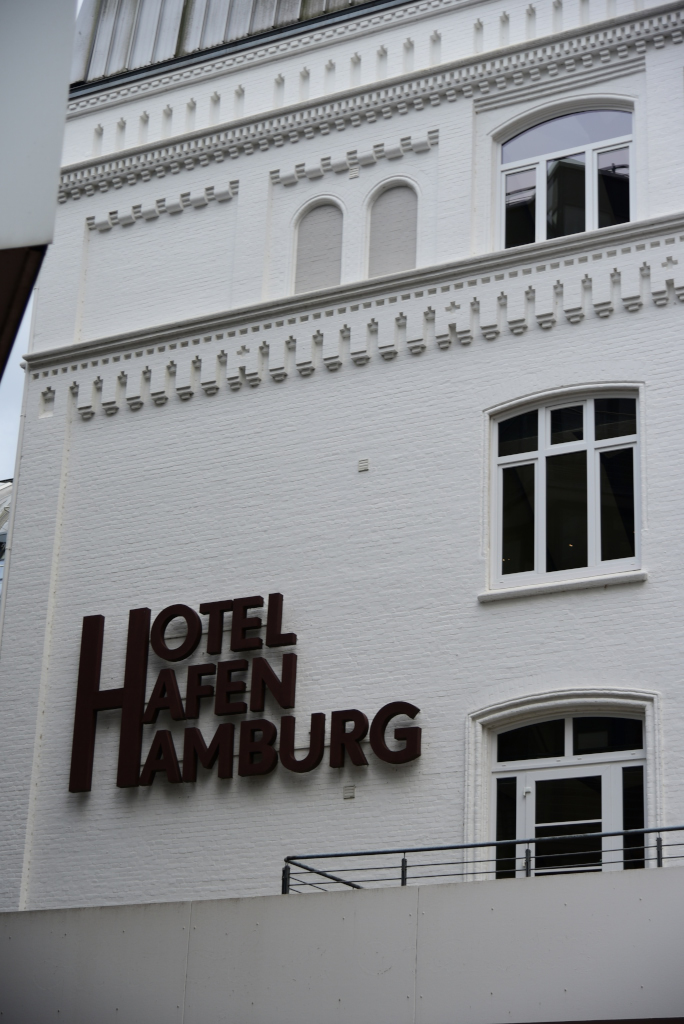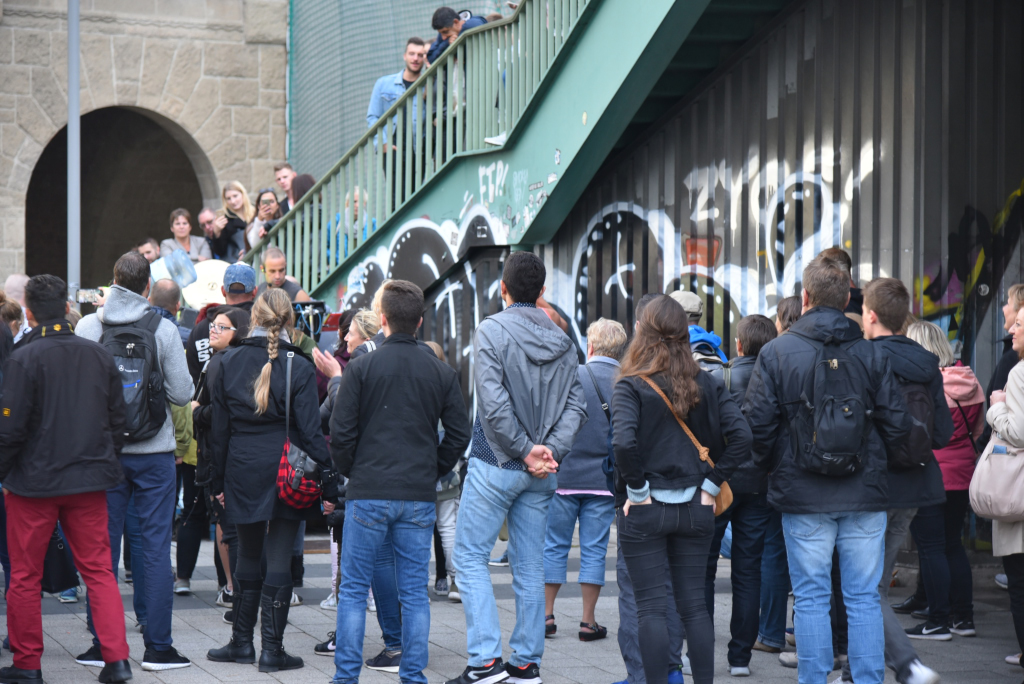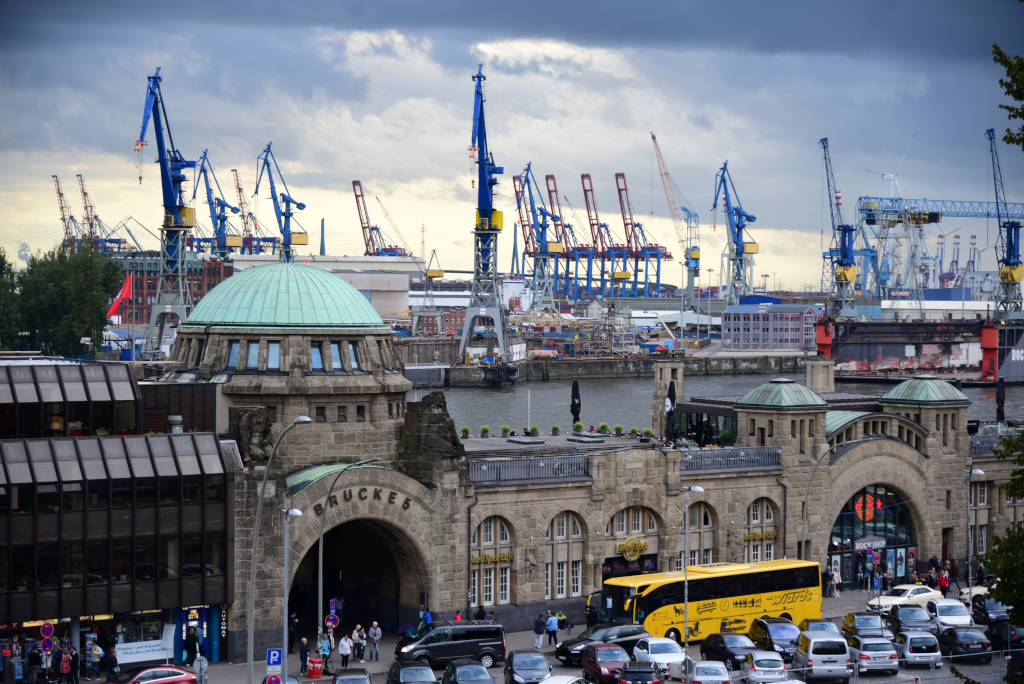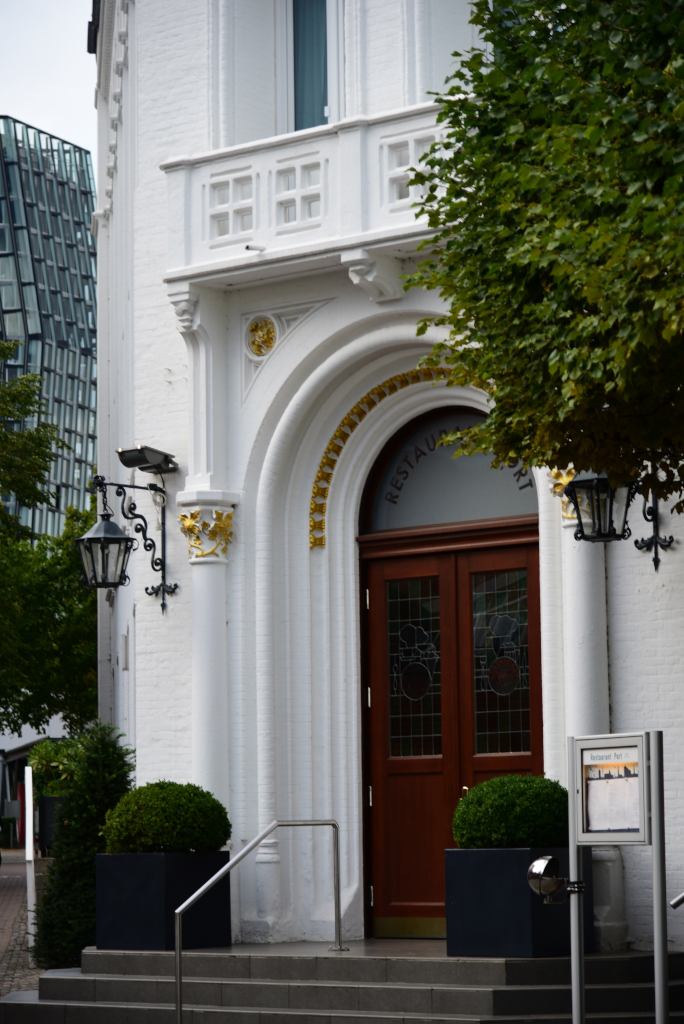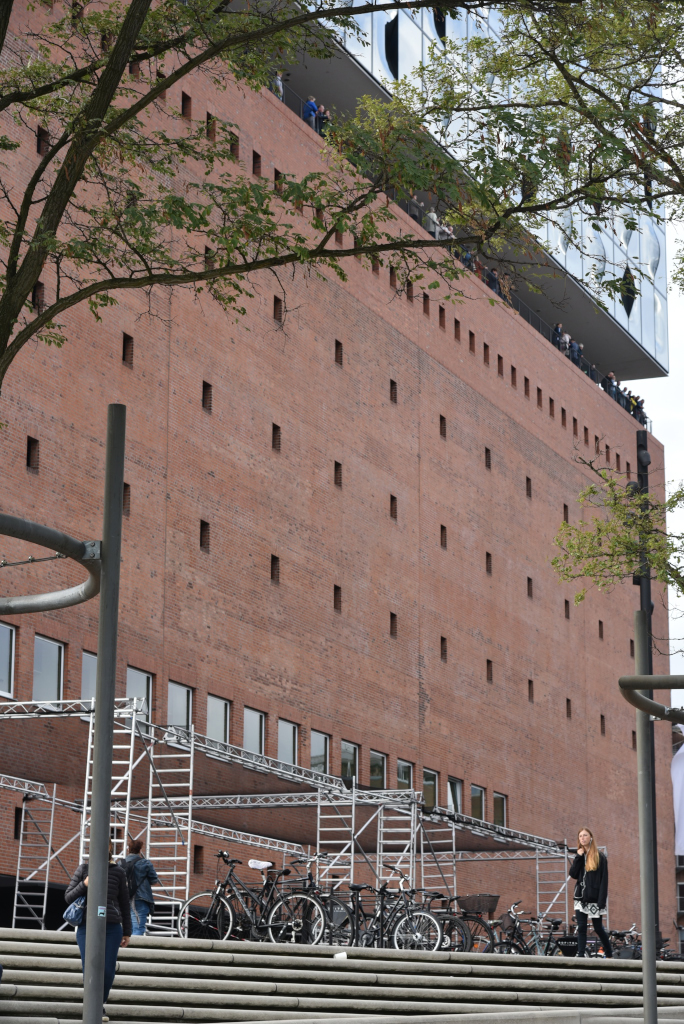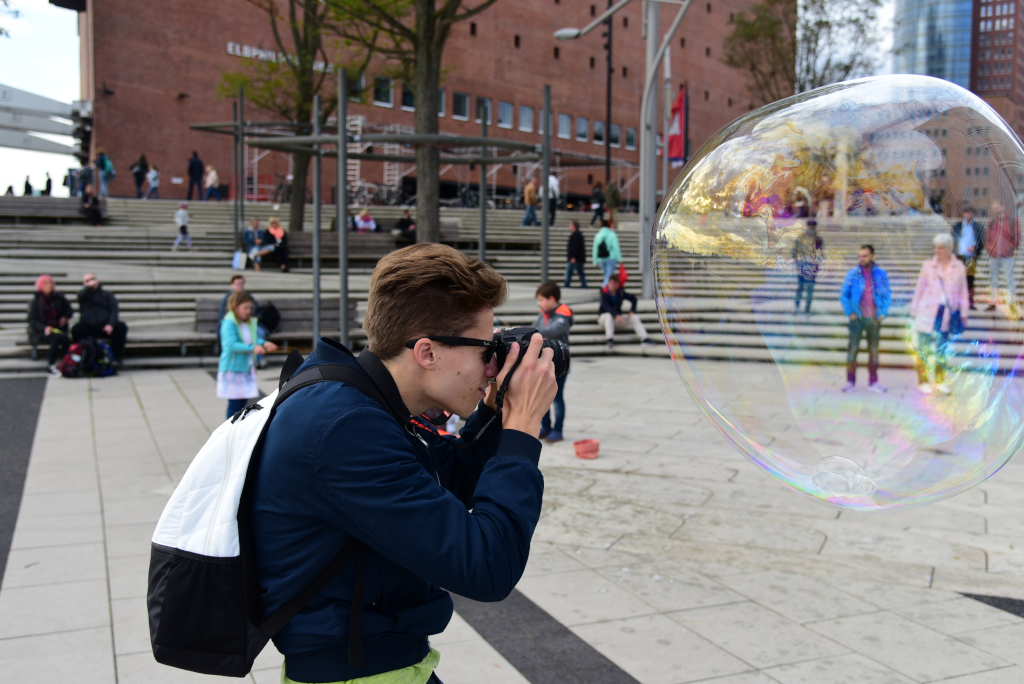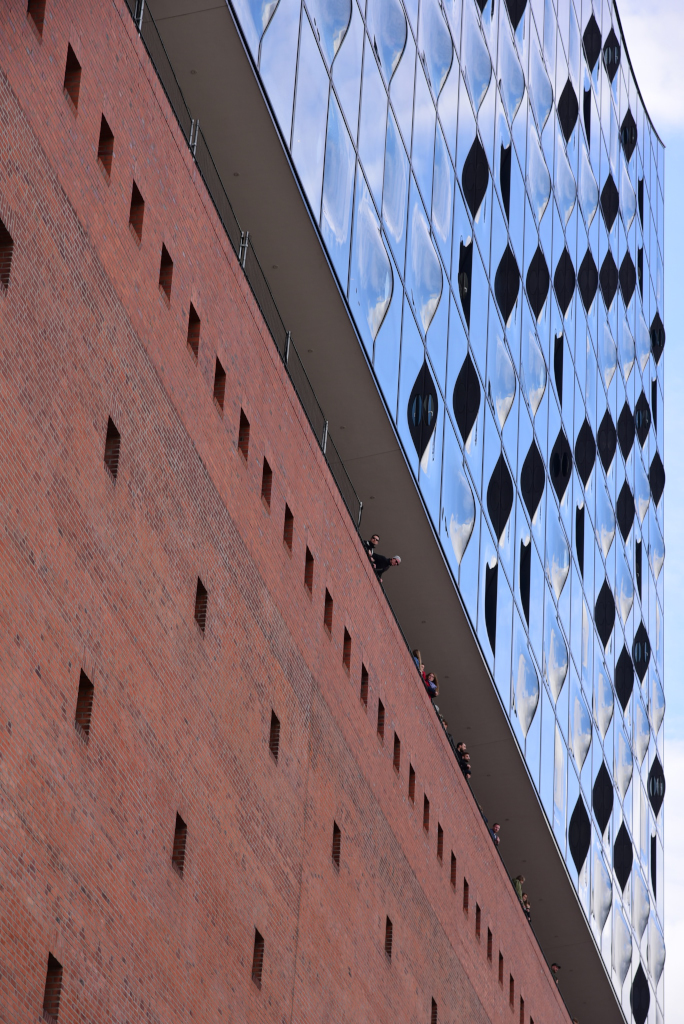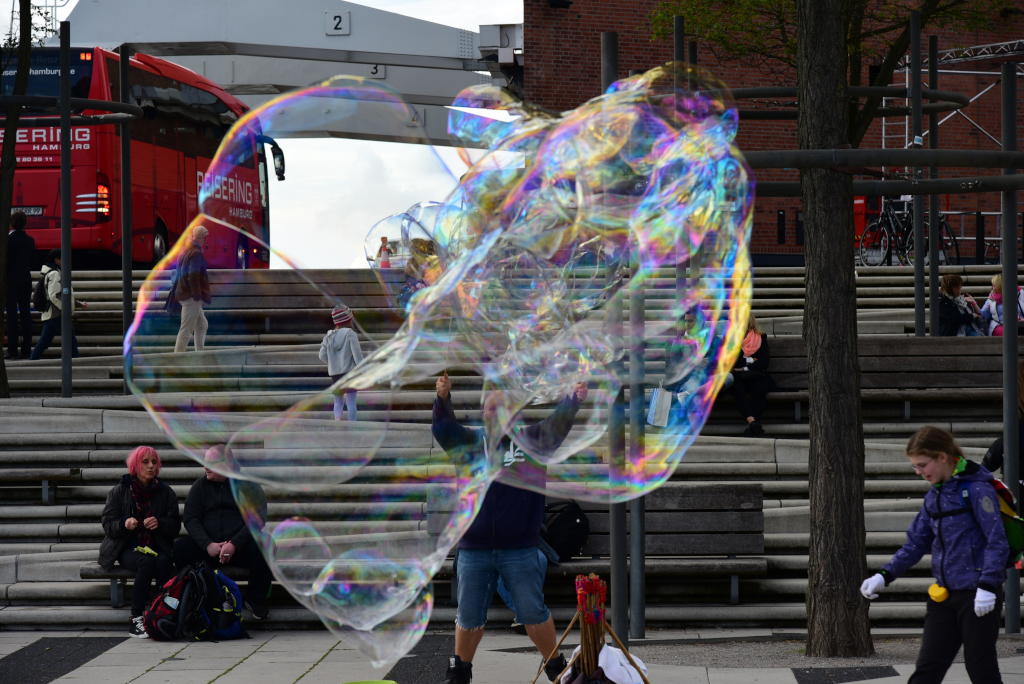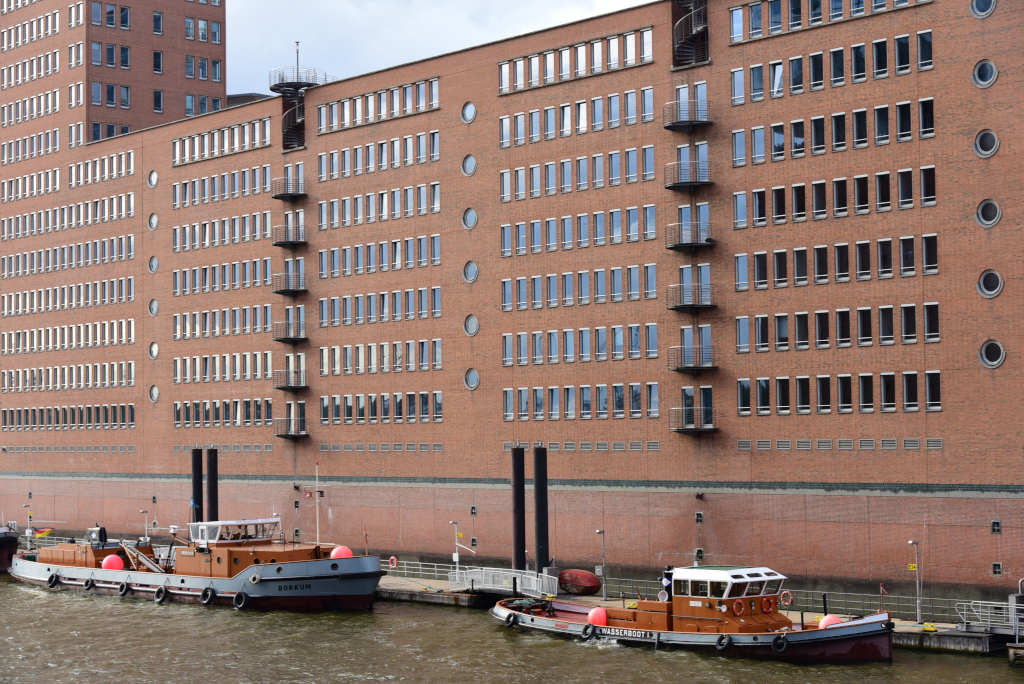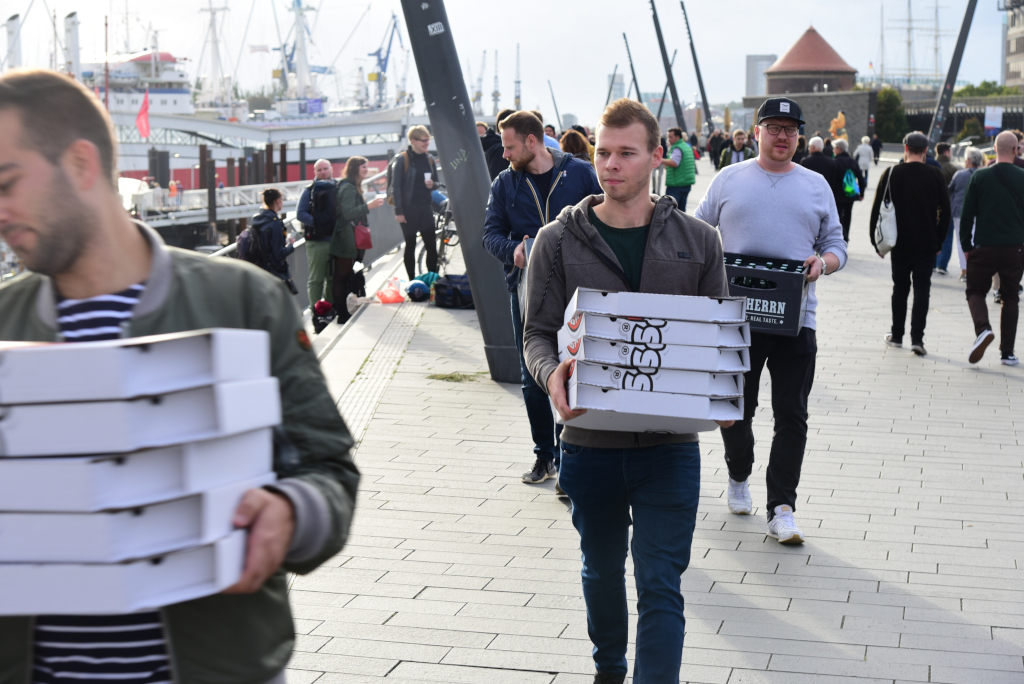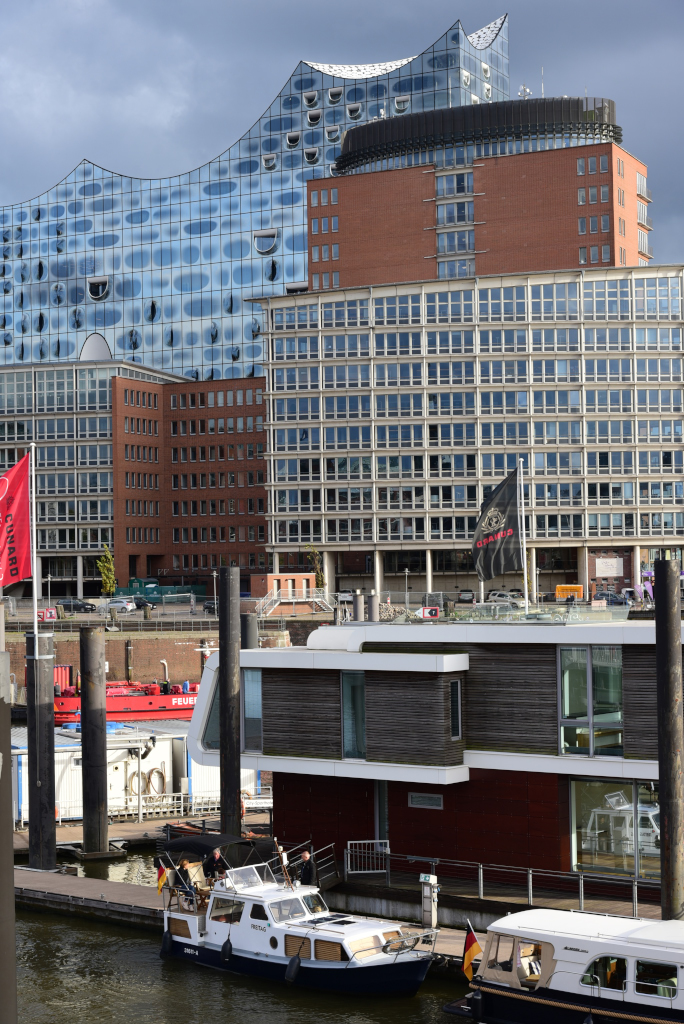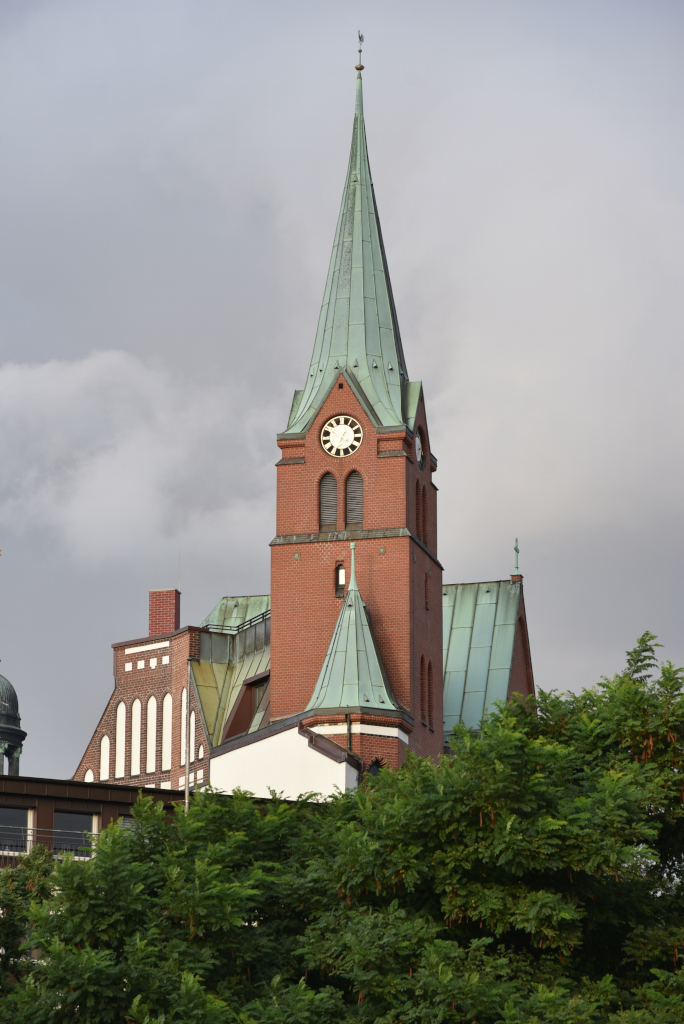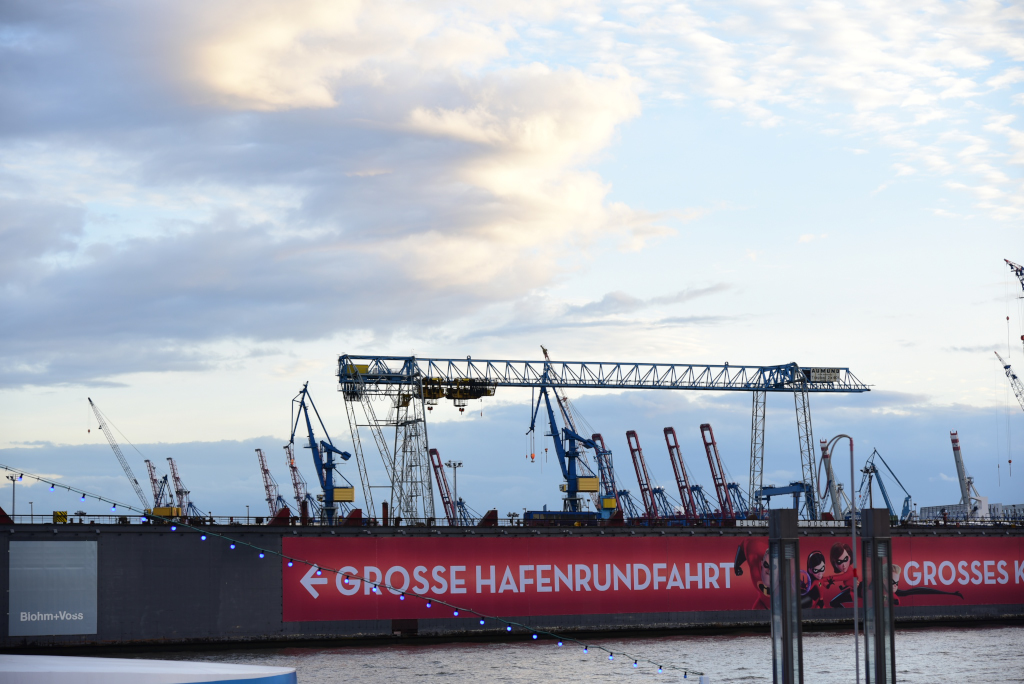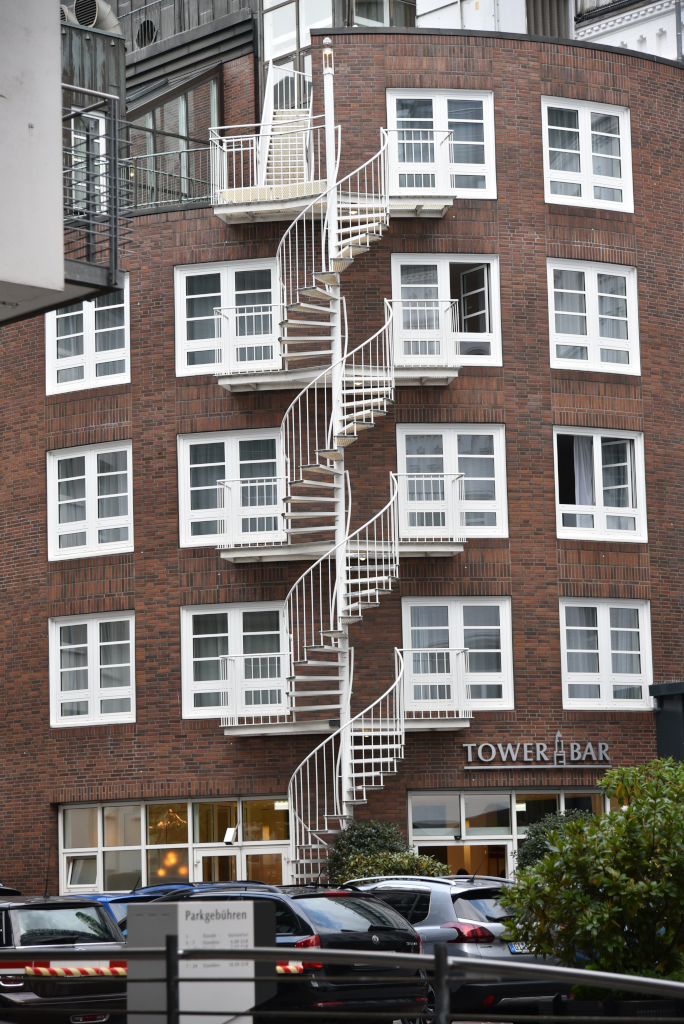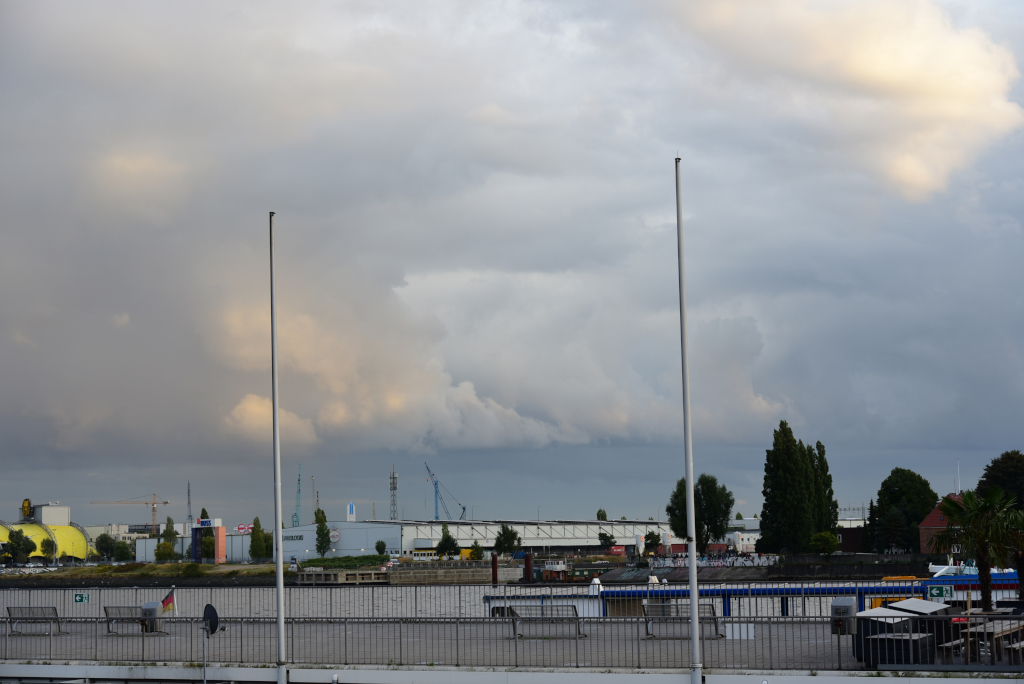September 15, 2018
HafenCity refers to the islands immediately south of the Altstadt that comprise the core of Hamburg’s historic port. HafenCity is now being rebuilt as the largest and one of the most audacious mixed-used communities in all of Europe, surrounded by water, including the Elber river running to the south, and the canals that transect the area. An area of 157 ha is being redeveloped, including facilities for workplace and residential uses, culture and leisure, tourism and retail.
The Überseequartier subway station provides a stunning introduction into the design wonderland of HafenCity. Huge box-shaped light cells line the upper walls of the subway station, a rainbow of solid and variegated light emanating from the displays and bathing the station’s platform in a continuous spectacle of changing hues. Above ground, stunning architectural works, docks, innovative retail establishments, a dizzying counterpoint between turn-of-the-century and avant-garde design in the midst of the turmoil of massive redevelopment, the entire spectacle surrounded by water, the canals emanating from the great Elbe river that marks the city of Hamburg.
With the exception of the quays and promenades, the entire HafenCity district will be raised to between 8 and 9 m above sea level, lending the area once dominated by port and industrial uses a new and unique topography. And yet the water and the typical port atmosphere is omnipresent, as the district faces the city’s commercial port to the south. The commercial and recreational sides of the port blend along the Elbe river, running from the edge of HafenCity to the Landungsbrücken wharves of Sankt Pauli.
Since the site of HafenCity was apparently largely bereft of historic buildings worth preserving, the district now consists almost exclusively of new buildings. Altogether more than 2.4 million square metres of gross floor area (GFA) is being constructed, including more than 7,500 residential units for over 15,000 residents, as well as business premises offering in excess of 45,000 job opportunities, plus educational institutions, restaurants and bars, retail, cultural and leisure amenities, with parks, plazas and promenades. Public open spaces throughout HafenCity now cover an area of more than 28 ha, while the total length of shoreline extends to 10.5 km.
The land of the former island of Grasbrook, upon which the HafenCity is built, lay until the beginning of the 19th century outside of the city gates. The city fortifications used to run along what is now Am Sandtorkai. The residential areas of Kehrwieder and Wandrahm were inside the walls, in the area of the current HafenCity. Outside the city walls, the boggy areas were used as meadows, and the western end of Große Grasbrook was used a place for executions, including those of pirates Klaus Störtebeker and the Victual Brothers. In the 18th and early 19th centuries, shipyards and port businesses operated here. In 1844, the first gasworks in Hamburg were built on the northern part of the island.
When the Binnenhafen and Niederhafen ports reached capacity at the end of the 19th century, the city walls were demolished, and the area of Grasbrook was used to extend the harbour area. In 1868, the first artificial dock was constructed at Sandtorhafen, and in 1881, the Grasbrookhafen was added. The Strandhafen was built directly on the Norderelbe, the Magdeburger Hafen, Brooktorhafen, and Ericusgraben were made to connect to the Oberhafen, and, finally, the Baakenhafen was built with a rail connection to the Hamburger Elbbrücken bridges and the Kirchenpauerhafen with anchorage on the Elbe. Until 1886, the entire island was built up with docks and port installations.
In 1872, the Hamburg Hanover railway station was constructed on Lohseplatz east of the Magdeburger Hafen. The Kehrwieder and Wandrahm residential quarters were demolished in 1883 to allow construction of the customs and duty-free zone of the Port of Hamburg, displacing around 20,000 residents. In 1888, the Speicherstadt could then be built in this area. Kaispeicher B was built in 1878 and the administration building of the old port authority (Altes Hafenamt) was built in 1885 at the Magdeburger Hafen. Around the start of the 20th century, the first heated fruit storehouses were constructed, and in 1928, a refrigerated herring warehouse designed by Fritz Schumacher was built.
Because HafenCity is subject to periodic flooding from storm surges, innovative flood protection technologies have been an important part of its redevelopment. The threat from flooding is even more grave due to the predicted effects of climate change. While dikes were initially considered to shield the islands from storm surges, it would have been impossibly expensive and taken away from the view. Instead, there are strict flood-protection rules in places within the special development zone, such as requiring new roads and public spaces to be built on sand terraces over 25 feet (7.6 m) above the normal high-tide line.
Buildings along the shore remain at their original level but must be waterproofed up to the elevated-road level. In addition, shore-adjacent buildings are required to have an entryway allowing access to the 25-foot (7.6 m)-high road level so that they remain accessible during times of flooding. Although the design has been expensive, it has been recognized as one of the more innovative flood protection innovations in use today.
The sightlines of the area blend innovative architecture with wharves, commercial boats, canals, cruise ships and cranes, all combined in a wild and dramatic hodgepodge, the roaming eye never quite sure what will land in its line of vision. It is obvious from the fantastical buildings around with their outlandish design aspects that no money has been spared in the redesign of the HafenCity district. Despite the prevalence of concrete and lack of green, it is incredibly intriguing to wander around the plazas, walkways and bridges that interconnect the labyrinthine district, every few paces new stunning views appearing.
The plaza adjoining the Elbphilharmonie is the highlight of HafenCity for gathering and mingling, hordes of tourists and locals arriving to see and be seen across the expansive terraced plaza area adjoining the innovatively-designed concert hall. Invariably one or more people make attracting crowds of people their mission, such as the man blowing huge bubbles, which brings together local photographers wanting to capture the unique moments and of course young children mesmerized by the sight of the huge, floating strangely shaped bubbles, the ever-morphing shapes floating languidly through the air.
The Elbphilharmonie is one of the largest and acoustically most advanced concert halls in the world. Designed by the architecture firm Herzog & de Meuron, the construction resembles a hoisted sail, and sits on top of an old warehouse building near the historical Speicherstadt. The Elbphilharmonie is the tallest inhabited building in Hamburg, with a total height of 108 metres.
The building is designed for both cultural and residential purposes. The original 1966 brick façade of the Kaispeicher A, formerly a warehouse, was retained at the base of the building. On top of this a footprint-matching superstructure rests on its own foundation, with a glassy exterior and a wavy roof line. The building has 26 floors, with the first eight floors located within the brick façade. It reaches its highest point with 108 meters at the western side.
The Elbphilharmonie features three concert venues. The Great Concert Hall can accommodate 2,100 visitors where the performers are in the center of the hall, surrounded by the audience. The acoustics were designed by Yasuhisa Toyota, who installed about 10,000 individually micro-shaped drywall plates to disperse sound waves. The Recital Hall is intended for the performance of recitals, chamber music and jazz concerts; it can hold an audience of 550 people. The complex also features the Kaistudio which allows for 170 visitors and is intended to serve educational activities.
The north banks of the Elbe in Hamburg have been converted into a showcase of urban redevelopment as well, combining the city’s maritime history, stunning architecture and landscaping, Hamburg’s presence as leading commercial port in Europe, many sightseeing opportunities in the historic sailing ships that line the waterfront, and the constant allure of all manner of boats offering cruises in the harbour, restaurants, club party environments.
When the area of HafenCity amounted to nothing more than crumbling, mouldering warehouses, the heart and soul of Hamburg’s port area focused on Landungsbrücken, the iconic gateway to the city from which locals and tourists would depart on harbour cruises, or perhaps boat trips to far more distant and exotic destinations. I remember visiting the area in my early years and being enchanted by the dizzying array of boats, cranes, canals, warehouses, the waterfront interconnected by passages and bridges, bars, cafes and waterfront kiosks selling the famous marinated herring sandwiches to visitors.
The weather has gratefully held up on my long walking journey through HafenCity to Landungsbrücken today. It began with torrential downpours, then cleared up, the rains abating somewhat, revealing the kind of dramatic cloud cover that lends this northern maritime environment its signature beauty. The colours of the rainbow I see upon departing complement the growing coloration of the clouds at dusk and the brightly painted tugboats that line the wharves.
(Narrative excerpted from Wikipedia and www.hafencity.com)



